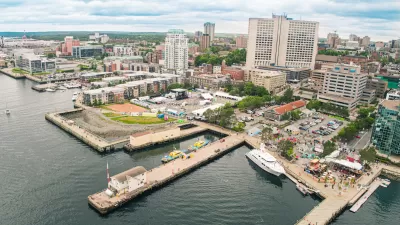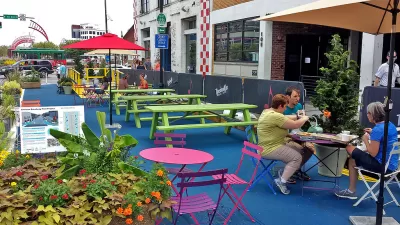Chuck Wolfe summarizes a major tenet of his new book and suggests we risk ignoring the back story of urban forms and functions by failing to truly understand the traditional relationships between people and place.
Summarizing his new book Urbanism Without Effort, Wolfe emphasizes the importance of first isolating spontaneous and latent examples of successful urban land use, before applying any prescription of typologies, desired ends, or governmental initiative. He suggests "urbanism without effort" as the the basis for a clean, multidisciplinary slate for reinvigorating the way we think about urban development today.
Simply stated "urbanism without effort" is what happens naturally when people congregate in cities.
Rather than assume that the popular and touted is readily adaptable, or readily subject to metrics or labels, Wolfe argues that we should return to first principles and isolate the fundamental, vernacular relationships between city inhabitants and what surrounds them:
We need to look, analyze, and discern, until we remember what a basic sort of city life looks like. While we consider these inherent factors that shape spaces and their use, we also must remember that there is a certain, spontaneous magic attributable to good urban places that can awaken them, but will only occur when they are locally relevant and embraced.
FULL STORY: The Dynamic Potential of Urbanism Without Effort

Maui's Vacation Rental Debate Turns Ugly
Verbal attacks, misinformation campaigns and fistfights plague a high-stakes debate to convert thousands of vacation rentals into long-term housing.

Planetizen Federal Action Tracker
A weekly monitor of how Trump’s orders and actions are impacting planners and planning in America.

Chicago’s Ghost Rails
Just beneath the surface of the modern city lie the remnants of its expansive early 20th-century streetcar system.

Bend, Oregon Zoning Reforms Prioritize Small-Scale Housing
The city altered its zoning code to allow multi-family housing and eliminated parking mandates citywide.

Amtrak Cutting Jobs, Funding to High-Speed Rail
The agency plans to cut 10 percent of its workforce and has confirmed it will not fund new high-speed rail projects.

LA Denies Basic Services to Unhoused Residents
The city has repeatedly failed to respond to requests for trash pickup at encampment sites, and eliminated a program that provided mobile showers and toilets.
Urban Design for Planners 1: Software Tools
This six-course series explores essential urban design concepts using open source software and equips planners with the tools they need to participate fully in the urban design process.
Planning for Universal Design
Learn the tools for implementing Universal Design in planning regulations.
planning NEXT
Appalachian Highlands Housing Partners
Mpact (founded as Rail~Volution)
City of Camden Redevelopment Agency
City of Astoria
City of Portland
City of Laramie





























